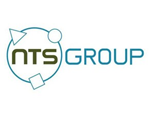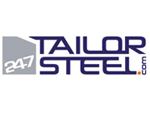A guide towards a data-driven organization
4 steps for better data management + 7 use cases from the manufacturing industry
Decision-making based on data is a challenge for many. Data quality is unreliable, data lacks context or human intuition contradicts itself. Yet now is the time to apply data correctly, to stop gambling in the hope of a positive effect, and start using well-founded arguments. For small and medium-sized companies in the manufacturing industry that are using data to its full potential, here is a guide to a data-driven organization.
Before we dive into the use cases, here are four steps to creating a foundation for your data management.
Disclaimer: In this article, we only focus on internal processes. For data that is used for external purposes, we advise you to read more about the legislation.
Step 1. One central data storage
Whether it's product-specific or financial data, data gives you results so you can make better decisions with the context of the data in mind. This starts with a central hub to which various data flows lead. Prevent your data from being spread across various systems. Software solutions with a microservices architecture such as that of Togetr have the advantage that each service communicates with each other and the data is centrally accessible.
If you use different tools such as MES, WMS or ERP, you can connect data through integrations and API endpoints. Many cloud-based SaaS companies have (free) integration options with Zapier. We do recommend that you thoroughly test external integrations before fully implementing them in your work processes. When centralizing your tools, you can use data migration tools if your system does not already support this.
A dashboard with KPIs keeps you informed. There are various tools available that visualize data for you with a free beginner’s license such as Databox. Note that this may fall short for advanced data insight.
Step 2. Ensure data quality
Especially in a data-rich landscape such as that of the manufacturing industry, it is not about more data, but better data use. All possible product information, monthly overviews, and production results can tell you a lot, but which data can actually be applied? To get quality, you take a closer look at the product lifecycle and track the data that influences your decision-making. A sharp eye and the desire to measure data more accurately leads to an improvement in data quality.
Without going into technical depth, Togetr has set up its data structure in such a way that it can be read even after drastic developments. With many software, data is stored until a certain deadline, and after, the primary data is deleted. At Togetr, we believe that there is power in 'old' data, provided it is separate from the most recent data. This way, tools that deviate in the field of data transfer can still receive Togetr data, because the original and most accurate data is preserved.
Step 3. Getting everyone on board
A data-driven organization can only be successful if the company culture matches. Ambassadors within the company, publishing results internally to create support, and informing employees about the possibilities are some ways to stimulate the mindset around data.
Step 4. Data security
The importance of data security cannot be emphasized enough. Certainly, data consisting of personal information or business results should only be available to authorized employees. If data security is only important to avoid fines, the message has not arrived.
Some steps you can take as an organization:
- Training - to make employees aware of phishing. Many data breaches are caused by e-mail.
- Carry out regular checks to make sure your IT landscape is fully secured. There is also value in having this checked by an external person.
- Check with your software supplier how often your data is backed up, in case it is necessary to retrieve it.
In addition to your own website, platform, or intranet, you often also use other (cloud-based) tools. Check with these software suppliers whether they comply with the correct guidelines and certificates.
7 examples from the manufacturing industry
The power of data lies in the insight it provides you. At manufacturing companies, the focus is often on the product, but the possibilities are broader. Some examples from the IoT to apply data within an organization:
1. A detailed forecast for the coming quarter
For predictions of a new period, the previous and the last year’s periods are often used. This technique assumes that the coming period will have the same context as last year. However, maintenance, the number of available employees, and your resources affect your results. A system that measures, analyzes, and bases a prediction on this data will give you a more accurate view of what to expect.
2. Optimal scheduling of tasks
Efficiency is reflected in your results. For repetitive tasks that require human actions, you can start by measuring how they develop. If the results decrease after 2 hours, you can start scheduling the same task in time blocks of 1.5 hours. With software such as Togetr MES, you can measure the duration and results up to sub-tasks.
3. An efficient team
You will notice this in the workplace during busy periods. In addition to predictions, prescriptive analytics also provide suggestions. After a certain amount of employees or tasks, productivity decreases, but how does a system determine this number? Hourly production results, motion sensors in crowded places, and timers for various tasks allow you to optimize work efficiency.
There is also a human side behind the results. If an employee's KPIs are lower than the previous period, something may be wrong. There are also opportunities for HR to use data to prevent problems.
4. Predict repairs
Sensors can already indicate a repair in time, provided you know how to read it. A vibration sensor will normally display a repeating pattern. As soon as deviations occur, this can indicate that a layer is deteriorating and causing the machine to shake more. Combine this data with the average lifespan and the date of the previous maintenance, and you create predictive maintenance. Many machines or parts have an average life span. With counting sensors you measure how often a machine or a specific part is used and you receive a notification as soon as this period (almost) ends. Here, optimal planning comes into play as well, since you can efficiently plan maintenance without causing major delays in the production process.
Take it one step further and measure the repair frequency and average resolution time. This way you can anticipate possible repairs in the planning. With triggers, conditions, and notifications you can automatically schedule inspections when parameters exceed certain values.
5. Transport
In case of transport delays, you want to inform all those involved immediately. Automate emails based on asset tracking so the right people are aware of the delay. This can be set up internally for warehouse employees, or externally for a better customer experience.
In addition to time, you can also look at fuel consumption to save costs. Efficient, shorter transport routes save fuel, but an organization may benefit more from combining trips.
6. Remote monitoring
Nowadays you don't just deliver a product, but a product as a service. Aircraft engines are 'hired', paying for the flying hours instead of the engine. The supplier ensures that the motor functions correctly by measuring. In an elevator, you have alarm buttons for emergencies. As soon as this is pressed, the supplier should receive a notification. The constant overview through snapshots and the deviations in data provide control.
7. Locate problems
Deviations in normally constant output indicate a potential problem. If this happens more often in the same factory or in a specific production step, it must be addressed. In addition, this data is crucial for your investment decision-making. Fluctuating humidity and unpredictable temperature spikes can cause bigger problems, which you'd better be prepared for.
Pitfalls
- Data serves as a source of information and not as a confirmation of personal ideas. If you are looking for data that confirms your own idea, you can often find it. Use data correctly to give you enriched insights.
- Investigate where sudden changes come from. Abnormal patterns in data need to be examined for context.
- Integrate data for decision-making rather than just reflection. Quarterly results are used to look back and make a plan. Data is not only for reflection but also for future planning.
Conclusion
SMBs on their way to a data-driven organization face challenges regarding data quality, central data storage, and a change in the corporate culture. Certainly in the data-rich manufacturing industry, it is not about using more data, but about better use of data. Tracking problems on time, gaining financial insight for cost reduction, and discovering opportunities in the product lifecycle are some use cases of data for internal work processes. The influence of data is growing, and to grow as a company you have to take the first step now.
More free tools on the way to a data-driven organization?
Whitepaper: Master Data Management & Integration Services
Blog: 4 opportunities to use digital twins for manufacturing companies
Would you like to know more about data management? Contact us!










